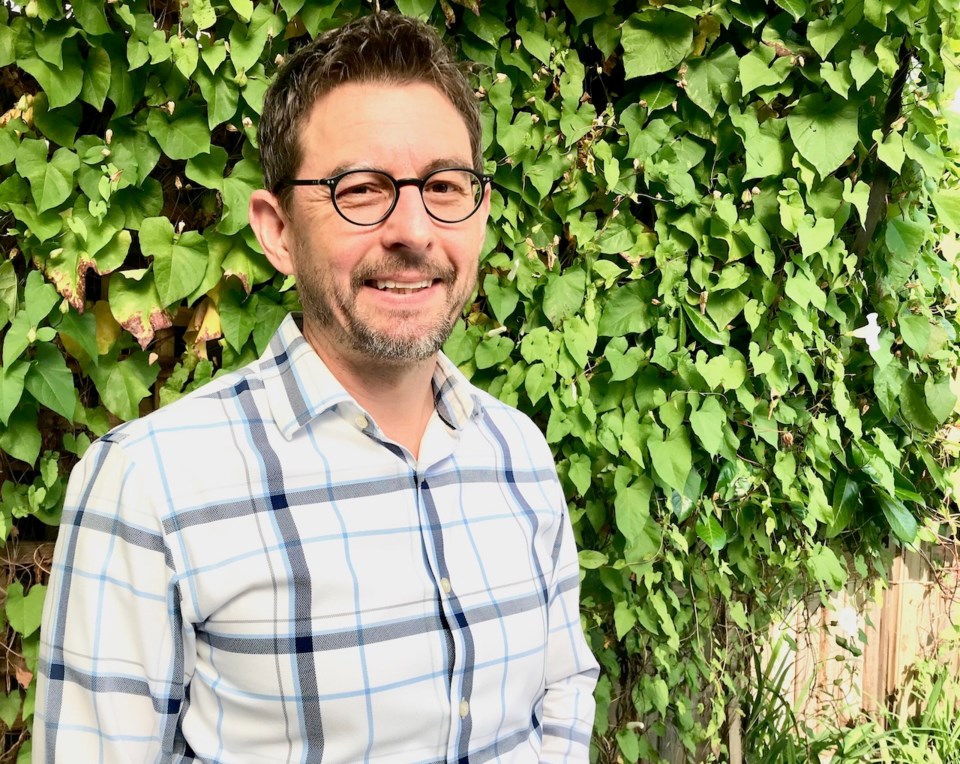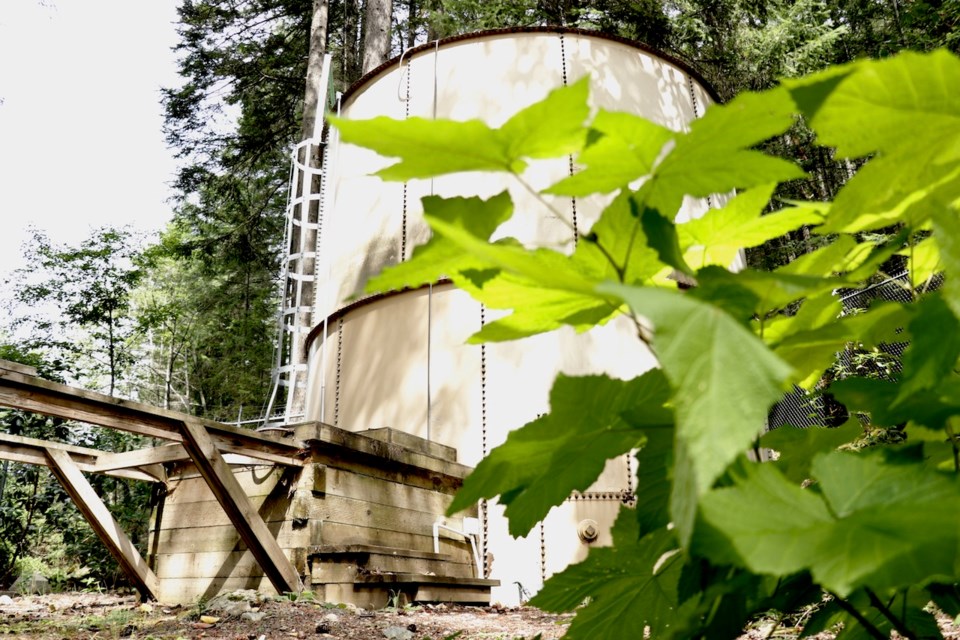A two-inch-wide pipe connects the Bluewater and King Edward Bay (KEB) water reservoirs.
For the past two months, the pipe has kept the taps from running dry in one neighbourhood while forcing the second neighbourhood into stage four water restrictions.
The restrictions came to an end last week but municipal staff reports at a special council meeting July 29 indicated that this summer’s water shortage was one chapter of a much longer, much deeper story. It's a story that has yet to be resolved.
In the meantime, water still flows through that pipe.
“It is without question that the aquifer level within Bluewater is severely depleted,” said Bowen Island Municipality’s interim director of engineering, Glen Shkurhan, at Monday’s meeting.
Until now, BIM didn’t know the levels of the Bluewater wells, which supply nearly 150 homes with water. But over the past couple of weeks BIM and contractors have installed monitoring equipment, inspected and tested two of Bluewater’s four wells.
Results from the new equipment show a drop of more than 200 feet in water levels since the wells were constructed in 1986 and 1991, Shkurhan said at the council meeting.
At time of construction, the well water levels measured between 15 and 30 feet below ground. Last week, levels measured between 187 and 292 feet below ground. The wells are between 400 and 450 feet deep, said Shkurhan at the council meeting.
“It is our opinion that the July 2019 static water levels represent stabilized conditions that will only marginally recover (i.e. become shallower) during winter low-demand, high-recharge season,” reads a report from EXP Services Inc., BIM’s hydrogeology assessment consultant. It suggests that some of the water-carrying bedrock cracks feeding the Bluewater wells have been either partially or entirely dewatered.
These tests eliminated equipment malfunction and well fouling as possible reasons for Bluewater’s water shortages Shkurhan indicated at the meeting.
“The problem appears to have been largely caused by over-pumping the BW source aquifer, likely to feed a watermain leak,” said Shkurhan in his written report. “Now that this leak has been repaired, it has removed a significant strain on the interconnected systems. What we now need to determine is whether removing this strain will allow the BW source aquifer to recover.”
Climate change was another possible contributor to the water depletion said Shkurhan.
“It remains unclear at this time whether the BW and KEB systems can eventually return to Independence,” said Shkurhan later on in the report. “At this time, BW cannot.”
Next door, the King Edward Bay aquifer is showing signs of strain. The 2019 winter peak water levels were 10 per cent below those of 2017 and prior, said Shkurhan in his report. He also said that the summer lows are more extreme and last longer than they did before 2017.
Bluewater usage isn’t the only drain KEB has had in the past couple of years. In July 2018, two significant leaks and some over usage pushed the neighbourhood into severe water restrictions. Shkurhan said that BIM will need to watch over the coming winter to see if the decline stabilizes or reverses.
“For both aquifers, it is possible that multiple years will be required to solidly demonstrate their long-term fate,” Shkurhan said in the report.
Shkurhan also said in his report that both systems need new operation and management programs.

Where to go from here?
“It’s going to be fixed,” said Mayor Gary Ander at the council meeting Monday evening. “It’ll be better and it’ll be better forever.”
Kathy Lalonde, Bowen’s chief administrative officer submitted a long-awaited report to council detailing the history of the water systems, particularly the provenance of the link between the King Edward Bay Water system and Bluewater.
Lalonde concluded that while there had been intent on the part of the council of the day to have a permanently merged, or interconnected, system, that requirement was not written into the King Edward Bay Local Area Service establishment bylaw. Bluewater wanted the merged system, King Edward Bay did not. The connection between the two systems dates to 2008, King Edward Bay voted not to have a merged system in 2012 after the establishment of the water system’s local advisory committee (LAC).
“As the system operator, BIM has a large responsibility in carrying out its duty,” said Lalonde in the report. “The systems are interconnected, but it is likely that the operation of these systems is not optimized.
“The duty of BIM has been at times hampered by the LAC’s, which are to be advisory in nature, not governing.”
Lalonde is advocating for an island-wide overhaul of the water system and governance structure.
Council passed a resolution Monday to hold a strategic planning session with Shkurhan to discuss the water issues in September.
Bowen’s chief financial officer, Raj Hayre, will also meet with the LACs in the fall to answer questions about the financial costs of the water shortages.
Community response
Beyond the stress of being on stage four water restrictions for several months, west side residents have had many comments for the municipality.
Adam Holbrook is longtime chair of the Bluewater LAC. He said that Monday’s meeting raised as many questions as it answered, though his questions are now more specific.
“Who exactly is paying for what?” Holbrook is wondering. Last fall, BIM approved spending $75,000 from the Bluewater reserve fund on drilling two new wells for the system (the two wells were dug this past spring, at least one of which was deemed unviable). Council authorized $60,000 for further watermain maintenance Monday, which could further drain that pot. Bluewater will also be charged $3,000 for the tanker that hauled approximately 16 truckloads of water from the Cove Bay Water System to the Bluewater reservoir after the reservoir ran dry earlier this month.
King Edward Bay residents have other priorities. Brian Thomas-Peter, a resident of 10 years of King Edward Bay and chair of its LAC and who has combed the municipal documents with a researcher’s precision, says he’s wary of the re-emergence of the idea of a merged water system without significant investment in the Bluewater infrastructure. He says the concern is particularly pressing in light of the revelation that the Bluewater wells are severely depleted and the King Edward Bay wells are showing signs of strain.
“At the moment we’re reluctant to participate in any process or pathway that’s leading to what we now believe to be a predetermined conclusion,” said Thomas Peter, referring to the “strategic planning session” suggested in Lalonde’s report for September.
“I am speaking for the LAC and for King Edward Bay as a whole, when I say that King Edward Bay doesn’t have a principled objection to formal merger, sometime in the future. But we will not consider that until there is an equity in the quality of the systems,” he said. “We’re not going to take on, we don’t wish to take on, and we will not vote for, I’m sure, a merger prior to the equalizing of our capital investing.”
“But what remains is this notion of intention, and that intention [of a merged water system] was actually created prior to there being anyone in King Edward Bay. And now they’re acting as though they can ignore the people who now exist in King Edward Bay, the 40 owners of property in King Edward Bay.”
But Thomas-Peter does see hope. “I’m pleased to see that we’ve got some technical people on it, that we’re going to deal with it and I’m very reassured by the mayor’s words, who said that we’re going to fix it now.”
What about Arbutus Ridge?
With water already running low on the west side of the island, there have been some public concerns about the second phase of the King Edward Bay development, Arbutus Ridge, which plans to develop 38 units plus supportive housing for seniors and adults with Down Syndrome.
Neither Shkurhan nor the site’s developer Allard Ockeloen say that there is any need to stop development.
Shkurhan explained in his report that any future development would need to find a new water source.
New water sources are tested by pumping up water from the new well and monitoring all the other wells in the vicinity to see if their levels are at all affected. If the other wells’ levels are affected, then the well is not viable for a new development.
Ockeloen says that in the next few weeks his development will start to drill for its water.
“The timing is good,” he said, pointing out that more infrastructure means more access to water.
“It makes sense for both Bluewater and ourselves to just keep looking for more water,” he said.
“If you build new infrastructure and you find new water and new wells, it’s probably a good thing for the new neighbourhood and the existing neighbourhoods,” said Ockeloen, pointing to the recent events as an example of when one neighbourhood’s infrastructure can support another’s.
Shkurhan indicated some avenues to focus on, rather than halting development.
“What is more important is to control the demands placed on the current well systems, through water conservation, contemplation for a rainwater capture and re-use program, and active management of the communal infrastructure to prevent further leaks and system failure,” he said in the report.



